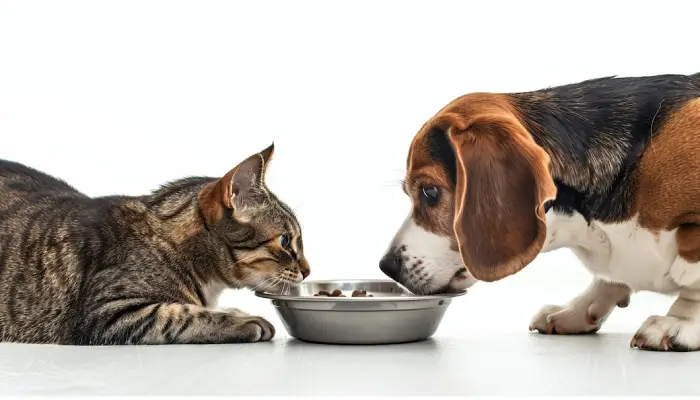Tips to Keep Your Pet’s Diet on Track Every Day
Feeding your pet may seem like a simple task, but it’s one of the most important parts of daily care. A consistent, well-managed diet helps prevent obesity, improves energy levels, supports digestion, and contributes to a longer, healthier life.
In this article, you’ll find practical tips to help keep your dog or cat’s diet balanced and on track—every single day.
1. Stick to Regular Feeding Times
Routine is essential for pets. Feeding them at the same time each day helps regulate their metabolism, supports healthy digestion, and can even reduce anxiety.
- Dogs usually do best with two meals a day—morning and evening.
- Cats may prefer small meals multiple times a day, or timed free feeding.
Avoid irregular feeding times or feeding off-schedule snacks, which can lead to begging or overeating.
2. Use the Right Portion Size
Overfeeding is one of the leading causes of obesity in pets. Use a measuring cup or a kitchen scale to ensure you’re giving the right amount of food.
Check the feeding guidelines on the pet food label and adjust based on your pet’s:
- Age
- Weight
- Activity level
- Breed
Ask your vet for guidance if you’re unsure.
3. Choose High-Quality Pet Food
Not all pet foods are created equal. Look for brands that list real meat or fish as the first ingredient and avoid foods with excessive fillers, artificial preservatives, or by-products.
If your pet has allergies or sensitivities, consider limited-ingredient diets or grain-free options—with veterinary approval.
4. Avoid Feeding Human Food
It’s tempting to share table scraps, but many human foods are unsafe for pets and can cause digestive upset or toxicity. Avoid giving your pet:
- Onions and garlic
- Chocolate
- Grapes and raisins
- Fatty or fried foods
- Cooked bones
Even “safe” human foods should only be given in small amounts and as an occasional treat.
5. Track Treats
Treats are a great way to reward your pet, but they should never make up more than 10% of their daily calorie intake.
Choose healthy options like:
- Freeze-dried meat
- Dehydrated fruits (without added sugar)
- Vet-approved dental treats
Always factor treats into your pet’s daily food allowance.
6. Keep Food and Water Bowls Clean
Wash your pet’s food and water bowls daily to remove bacteria, leftover food residue, and saliva.
Use stainless steel or ceramic bowls instead of plastic, which can trap bacteria and cause chin acne in some pets—especially cats.
7. Monitor Body Condition, Not Just Weight
Instead of only focusing on the number on the scale, observe your pet’s body shape:
- Can you feel their ribs without pressing hard?
- Do they have a visible waist from above?
- Is there a natural “tuck” behind the ribs?
If not, it may be time to adjust their portions or activity level.
8. Adjust Diet With Age and Health
Puppies, kittens, adults, and senior pets all have different nutritional needs. Make sure your pet’s diet matches their life stage and health status.
Pets with health issues (like kidney disease, diabetes, or allergies) may need a special diet prescribed by your vet.
9. Watch for Food Sensitivities
Keep an eye out for signs of food intolerance, such as:
- Frequent itching or licking
- Vomiting
- Diarrhea or soft stools
- Gas or bloating
If you notice these symptoms, talk to your vet about trying an elimination diet or switching to a hypoallergenic formula.
10. Make Mealtime a Positive Experience
Feeding time should be calm, structured, and free of distractions. Avoid feeding your pet in a high-traffic or noisy area, and don’t rush them to eat.
For cats, consider using puzzle feeders to make mealtime more enriching. For dogs, feeding in a quiet corner can reduce food guarding or anxiety.
A Healthy Diet Starts With Daily Choices
Good nutrition isn’t about perfection—it’s about consistency. By managing portions, sticking to a routine, and paying attention to your pet’s needs, you’ll support their long-term health and happiness.
Every scoop of kibble, every clean bowl, every measured treat is a simple act of love—and your pet will thank you for it with a wagging tail, a soft purr, or a happy, healthy life.

